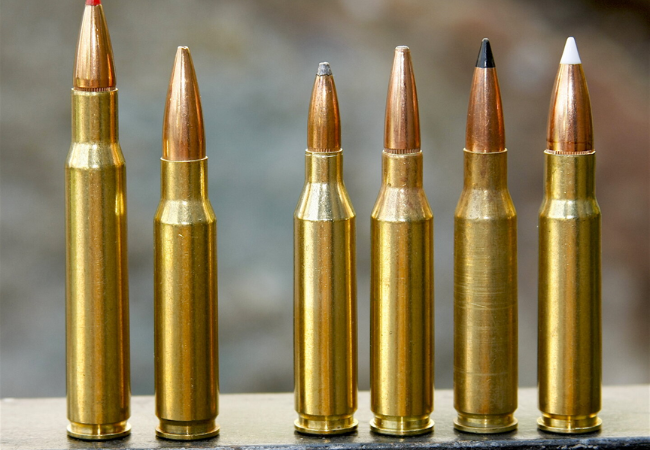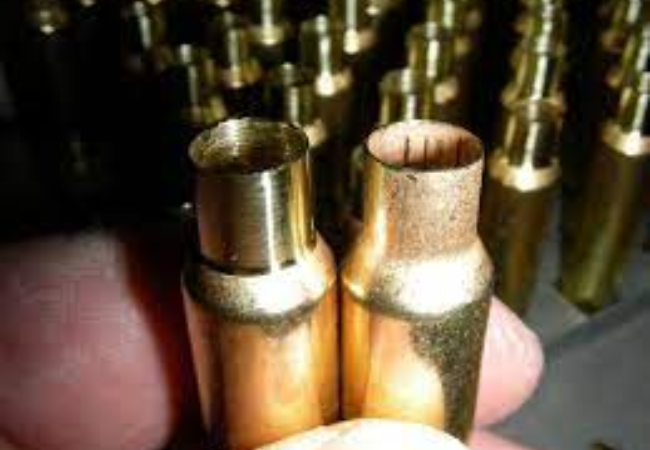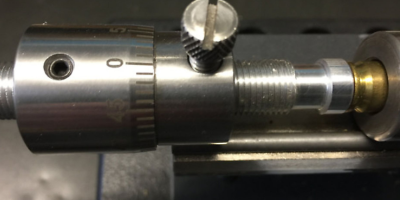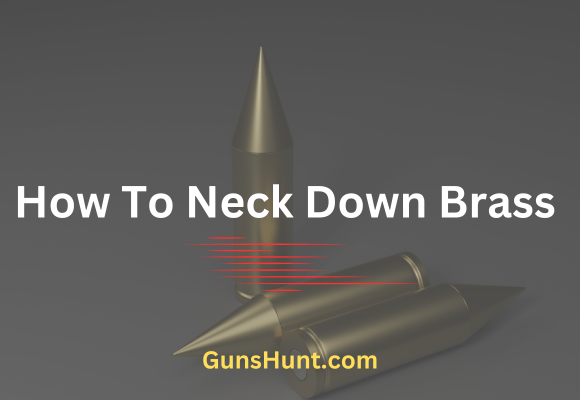Brass, a metal alloy made up of copper and zinc, has been used for centuries in a variety of applications, from ornamental fixtures to instrumental components.

One such specialized usage of brass in the shooting and firearm community is the process of “necking down.”
In this article, we will delve into the technique of using neck down brass and the reasons behind its popularity.
Understanding Neck Down Brass
What is Necking Down?
Necking down refers to the process of resizing the neck of a cartridge case to fit a smaller bullet diameter. This is often done to achieve specific ballistic performances or to create custom ammunition for a particular firearm.
This modification to the original cartridge design can result in a myriad of ballistic benefits, depending on the shooter’s objectives. While the general idea is straightforward, the execution requires precision and a deep understanding of the intricacies of ammunition.
- Origins:
The process can be traced back to early firearm enthusiasts and hunters who constantly experimented with ammunition designs. Their goal was to achieve better performance from existing cartridges or to adapt to various firearms they possessed. - Popular Calibers for Necking Down:
Cartridges like the .308 Winchester have been necked down to create new ones like the .243 Winchester. Such experiments are rooted in trying to get the best of both worlds—capacity and speed.
Why Neck Down?

By necking down, one can benefit from the larger case capacity of a given cartridge while using a smaller, often faster, bullet. This can lead to higher velocities and different performance characteristics in shooting.
The reasons to neck down brass vary based on individual needs, but some commonly cited motivations include:
- Velocity Gains:
A smaller bullet diameter typically translates to a lighter bullet. When fired from a cartridge case that has a larger capacity, these bullets can achieve higher velocities than their original design intended. - Trajectory Advantages:
Higher velocity bullets often have a flatter trajectory, making long-distance shooting more predictable. - Tailored Performance:
Shooters can achieve specific ballistic performances, allowing for custom solutions depending on whether they’re hunting, target shooting, or engaging in other shooting disciplines. - Economical Reasons:
Sometimes, shooters have an abundance of a particular type of brass or find it more affordable. Necking down allows them to adapt this brass for other firearm calibers.
The History
Necking down is not a new practice. Shooters and hunters have been experimenting with cartridge designs for over a century, trying to optimize performance for specific applications.
The concept of necking down isn’t new. It’s a testament to the innovation and adaptability of shooting enthusiasts over the centuries.
- Early Experimentation:
As early as the late 19th and early 20th centuries, as metallurgy and gunpowder technology advanced, shooters began experimenting with cartridge designs. This period saw the birth of many wildcat cartridges, some of which became standard issues later. - Modern Applications:
Today, the practice is widespread, especially among competitive shooters and hunters. Modern technology, paired with historic knowledge, has allowed for even more precision in the necking down process. - Iconic Examples:
Many popular cartridges today are the result of necking down. For instance, the .22-250 Remington, a favorite among varmint hunters, is a result of necking down the .250-3000 Savage.

Equipment Needed for Necking Down Brass
- Reloading Press:The cornerstone of any necking down process is a good quality reloading press. It provides the necessary force to reshape the brass.
- Dies:Specifically, you’ll need a neck-down die for the cartridge you’re working with. Dies come in sets, usually a resizing die and a seater die. For necking down, the resizing die is crucial.
- Lubrication:To prevent the brass from sticking in the die, proper lubrication is essential. Many types of case lubes are available, but it’s essential to choose one suitable for necking down.
- Case Trimmer:After necking down, the case might be longer than desired. A case trimmer ensures the correct case length, which is vital for safety and performance.
- Calipers:To measure case length and ensure that the brass is correctly sized.

The Step-by-Step Process
1. Preparation:
Before even beginning the process of necking down brass, a proper foundation must be set to ensure that the process runs smoothly and safely.
- Cleaning the Brass: Every piece of brass should be meticulously cleaned to remove any dirt, grime, or residue. This not only ensures a smooth necking down process but also prolongs the life of the dies. Ultrasonic cleaners or tumblers can be used for this purpose.
- Inspect for Defects: Before altering the brass, it’s crucial to inspect each piece for any signs of wear, cracks, or defects. Using compromised brass could result in failure or even dangerous situations when fired.
- Gathering Necessary Equipment: Having all equipment on hand and organized will streamline the process. This includes your reloading press, dies, lubrication, calipers, and any other relevant tools.
2. Lubricate:
Lubrication is vital to ensure that the brass doesn’t get stuck in the die during the resizing process.

- Choosing the Right Lubricant: Various case lubes are available on the market, each with its advantages. Whether it’s a spray, wax, or oil-based lube, ensure it’s suitable for the brass and dies you’re using.
- Applying Lubricant: It’s essential to apply it evenly, ensuring that the neck and body of the brass are well coated but not oversaturated.
3. Setting up the Die:
Properly setting up the die is crucial for successful necking down. The setup can vary based on the manufacturer, so always refer to the provided instructions.
- Die Alignment: Ensure the die is correctly aligned with the press to avoid any misshaping or damage to the brass.
- Depth Adjustment: The depth to which the brass enters the die determines how much it gets resized. Adjusting this is critical for achieving the desired bullet diameter.
4. Resizing:
With everything set, the brass is now ready to be resized.
- Running the Brass: Insert the brass into the press and apply steady pressure to run it through the die. Resistance will be felt as the brass reshapes.
- Checking Consistency: After a few pieces, it’s good practice to check the resized brass for consistency. Measurements should be within the desired specifications.
5. Inspect:
After resizing, each piece of brass should be inspected to ensure the process was successful and safe.

- Looking for Flaws: Check for signs of over-stretching, cracks, or any other anomalies in the brass. Any compromised pieces should be set aside and not used.
- Verifying Measurements: Use calipers to check the neck diameter and overall length of the brass. Ensure that they match the desired specifications.
6. Trimming:
Resized brass often needs trimming to achieve the correct case length.

- Setting the Trimmer: Case trimmers come with adjustable settings. Set it according to the desired length for the specific cartridge.
- Trimming Process: Insert the brass into the trimmer and remove excess material until the brass reaches the desired length.
- Deburring: After trimming, it’s essential to deburr the edges of the case mouth to ensure smooth bullet seating.
Safety Considerations
- Always Follow Load Data:Even though you’re customizing the cartridge, it’s essential to adhere to safe reloading practices. Always use trusted load data and start with lower powder charges.
- Regular Inspection:Necking down puts extra stress on the brass. Over time, this can lead to weakened cases. Regularly inspect your cases for signs of wear and tear.
- Avoid Mixing Brass:Stick to one brand and a lot of brass when necking down. Different manufacturers might use varying brass compositions, leading to inconsistencies.
Conclusion
Necking down brass is a technique rooted in the quest for ballistic perfection. Whether you’re a hunter looking for a specific performance or a competitive shooter aiming for that edge, understanding and mastering the process can be immensely rewarding.
However, as with all reloading practices, safety, precision, and attention to detail are paramount. With the right tools, knowledge, and patience, necking down brass can be an intriguing aspect of the shooting discipline.

